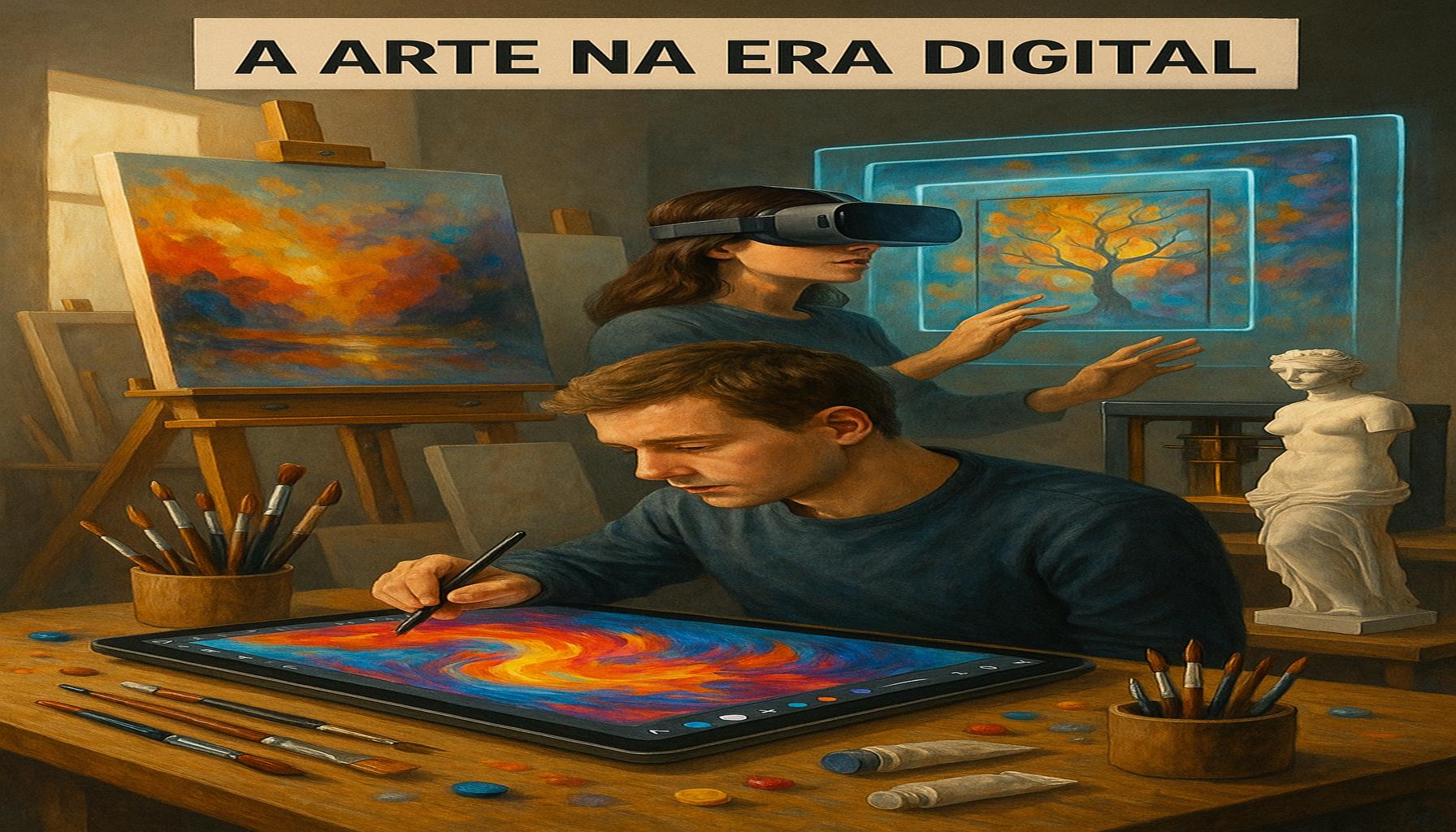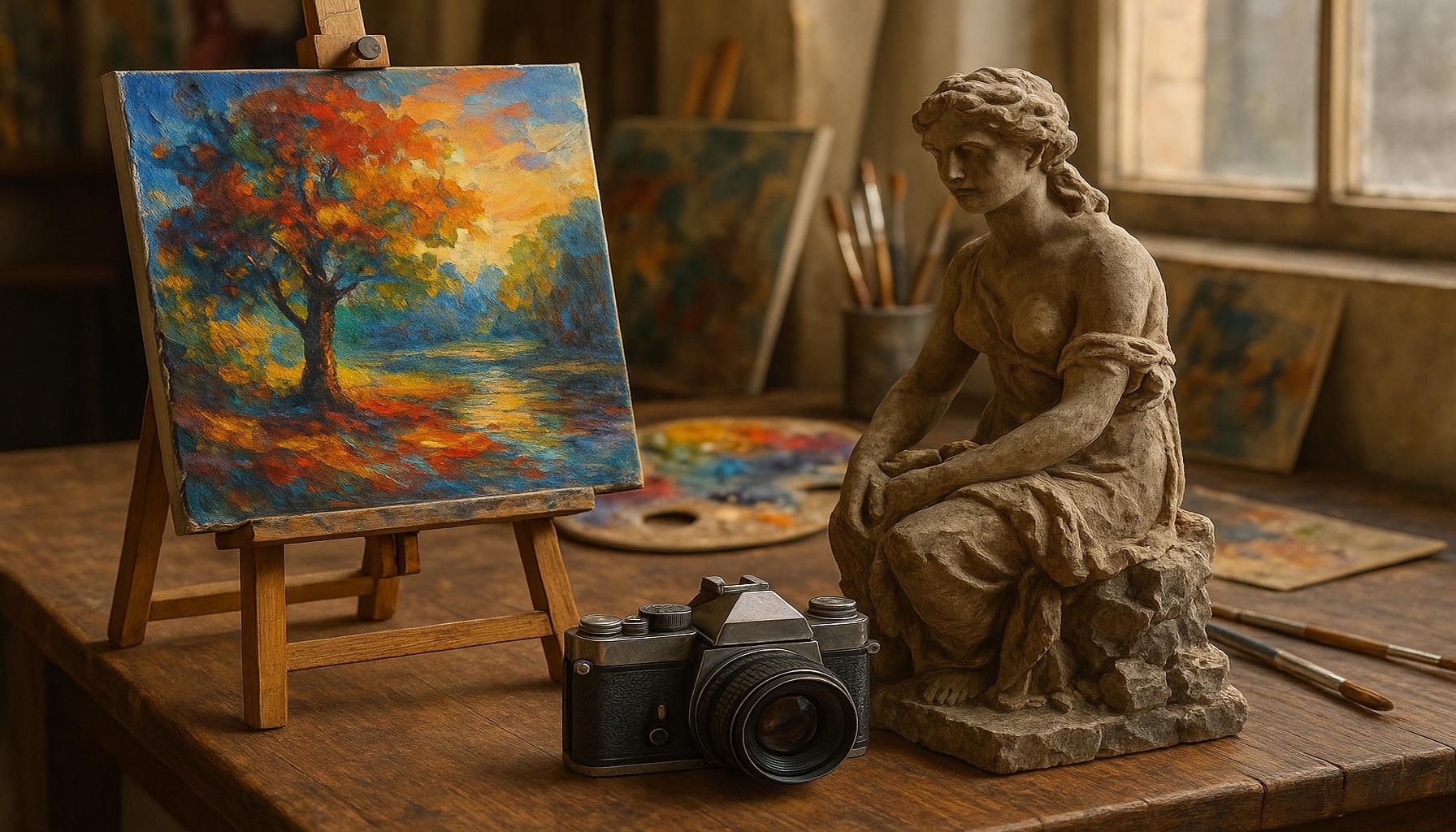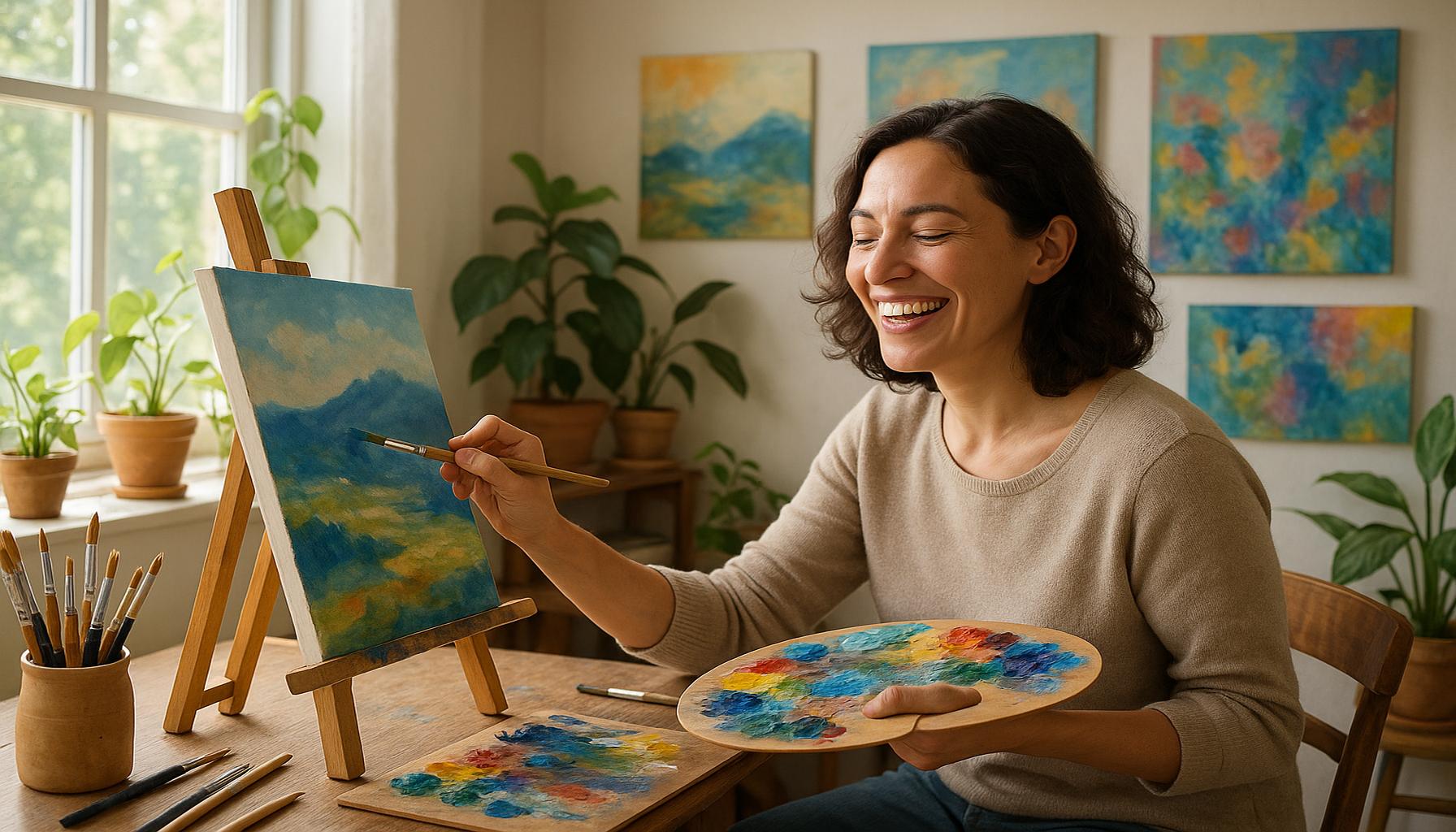Explore Watercolor Painting Techniques Inspiration for Beginners
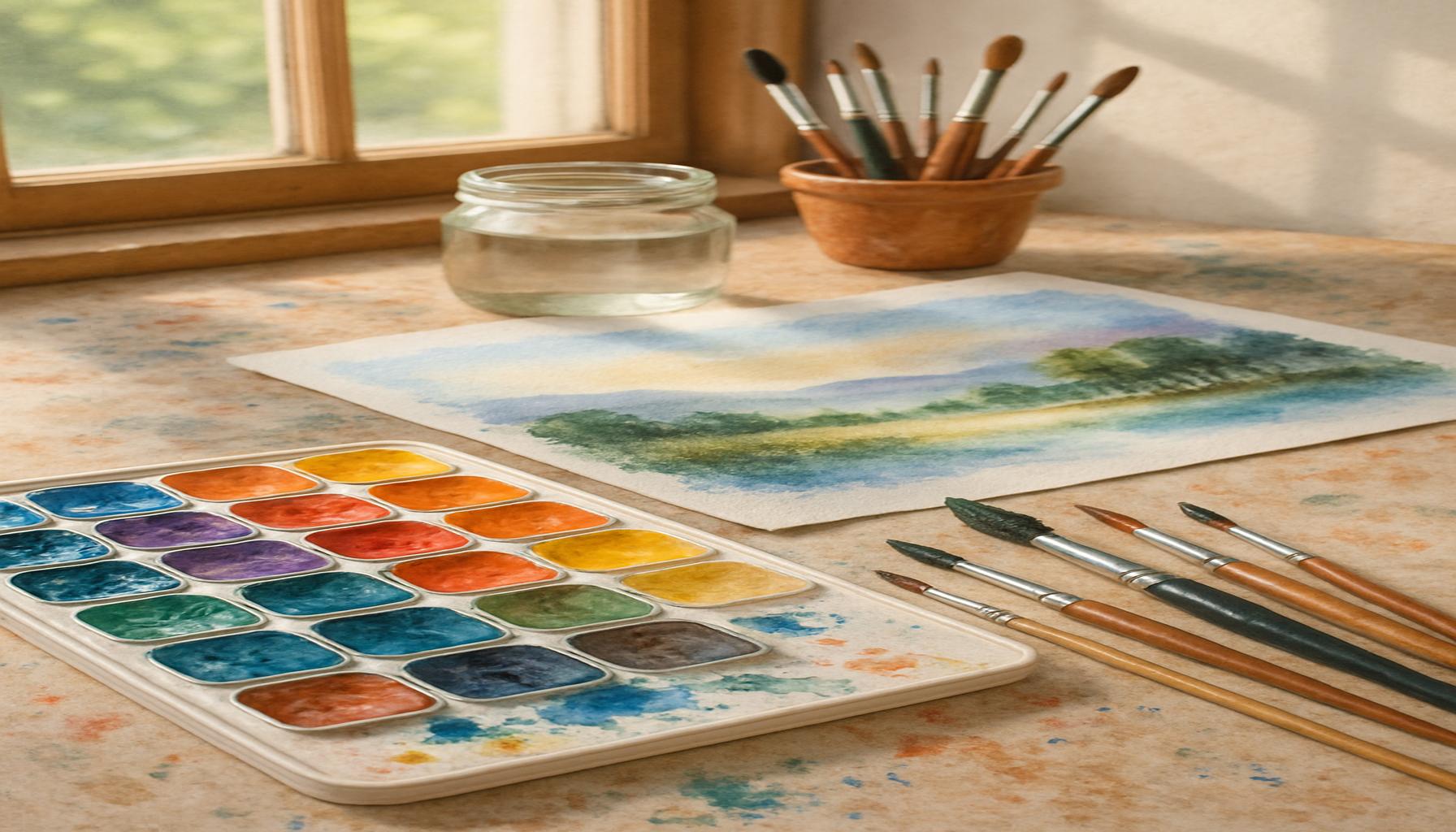
Unveiling the World of Watercolor
Watercolor painting has captivated artists for centuries, offering a unique way to express creativity through vibrant washes and delicate details. As a prominent form of creative hobby, it encourages exploration and self-expression, making it an ideal pursuit for beginners seeking to unleash their creative potential.
This medium is not just about producing art; it fosters mindfulness and relaxation, turning routine moments into inspiring experiences. Whether you are a complete novice or someone looking to brush up on your skills, understanding the basics of this technique can open doors to endless creativity.
What to Expect
In this article, we will journey through essential watercolor painting techniques, highlighting key aspects for beginners to grasp. Additionally, we’ll inspire you with resources and examples that can elevate your skills.
- Brush Techniques – Learn different ways to manipulate your brush for varied effects.
- Color Mixing – Discover how to create vibrant palettes that bring your artwork to life.
- Layering – Explore the importance of layering paint for depth and texture.
- Common Tools – Identify the must-have tools to get started.
- Inspiration Sources – Find out where to seek motivation for your next painting.
Prepare to immerse yourself in this beautifully fluid art form, as we unveil the top 5 techniques and inspirations that can ignite your passion for watercolor painting!
Exploring the Art of Watercolor Painting: Techniques and Inspirations for Beginners
Watercolor painting stands out as a captivating art form, welcoming individuals into a world of colors and creativity with a gentle yet expressive approach. Whether you are a novice looking to dip your brushes into the realm of colors or an experienced artist wanting to explore new avenues, watercolor painting offers vast possibilities. This art form, often celebrated for its transparency and fluidity, reinvents itself with each brushstroke, promising a unique masterpiece every time. In this article, we will explore the top five techniques and inspirations every beginner should consider on their watercolor journey.
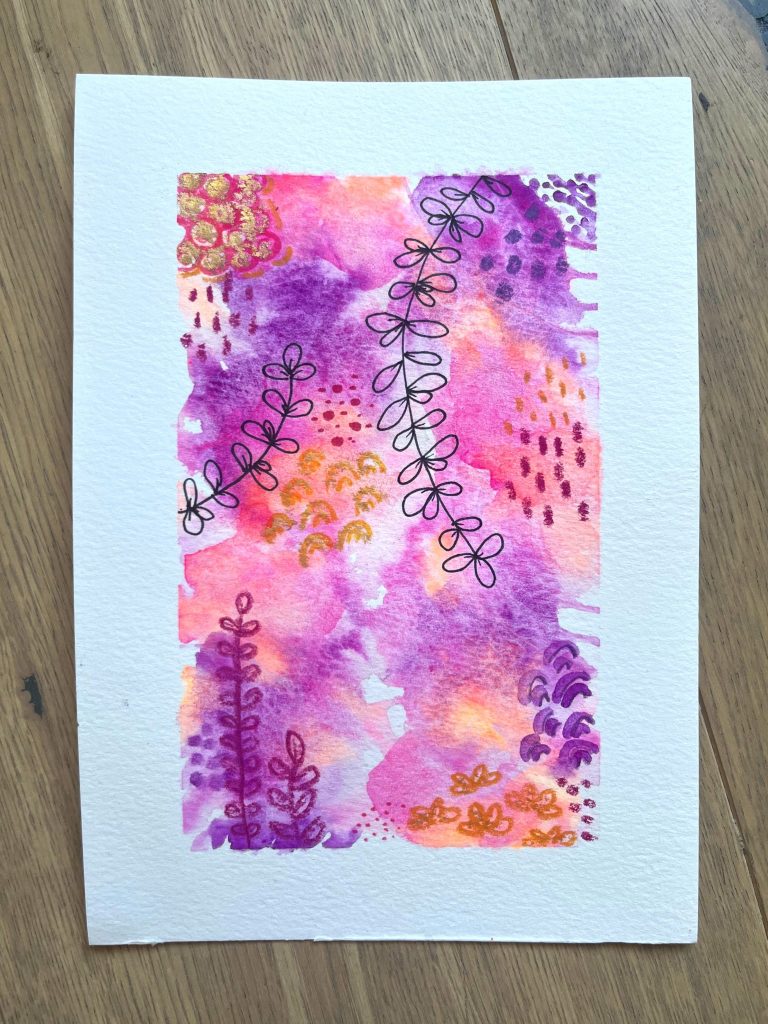
5. Understand the Materials
Before embarking on your watercolor adventure, familiarizing yourself with a variety of materials is essential. Watercolor paints primarily come in two forms: pans and tubes. Pan paints, which are solid, are particularly convenient for travel and outdoor painting pursuits. They offer easy portability, making them a favorite among plein air painters. On the other hand, tube paints provide a more vibrant and intense color payoff, ideal for achieving rich and bold washes. This choice allows for immediate access to a wide range of techniques, although they might require a more structured setup.
The quality of your paper also plays a crucial role in the outcome of your watercolor paintings. Higher quality paper, often labeled as 100% cotton or at least 200gsm, absorbs water differently, enhancing the brilliance and finesse of your work. This paper prevents warping and doesn’t bleed with excessive water, which can often be a hurdle for beginners using lesser-quality papers.
Your choice of tools, including brushes and palettes, significantly influences your painting experience. It’s advisable to start with a small selection of brushes, such as round, flat, and detail brushes, as these will help you achieve a variety of textures and effects. A comfortable and well-lit workspace further enriches your creative process, encouraging exploration and expression.
4. Mastering Basic Techniques
Once your materials are ready, dive into mastering some essential watercolor techniques. These foundational techniques form the basis of watercolor painting, offering endless possibilities for creativity. Here are a few to experiment with:
- Wet-on-Wet: This technique involves wetting the paper before adding pigment, allowing colors to blend and bleed into one another and creating soft, diffused edges. It’s particularly useful for backgrounds, skies, or any subject that requires a gentle, flowing appearance.
- Wet-on-Dry: By applying paint to dry paper, you achieve sharper edges and more defined shapes. This technique is preferred for detailed work and when precise lines are needed.
- Glazing: This involves layering transparent washes over dried layers to build depth and complexity. Each layer must be dry before adding another, allowing light to penetrate the transparent pigments and reflect back, giving your piece vibrancy and richness.
- Salt Texture: Introducing salt to damp paint results in intriguing textures as the salt absorbs the moisture, creating star-like patterns. This effect is unpredictable but adds a delightful dimension to your painting.
Practicing these techniques will not only foster skill enhancement but also assist in discovering personal styles as you progress. Experiment and embrace mistakes; they are integral to the learning process and often lead to surprising and delightful results.
3. Explore Color Theory
A pivotal aspect of watercolor painting is understanding color theory. Familiarizing yourself with the color wheel and the relationships between colors can significantly elevate your artwork. Delve into the dynamics of primary, secondary, and tertiary colors, and appreciate the harmony or contrast created by warm versus cool hues.
Experimenting with color mixing on your palette can yield unique shades, offering a personal touch to your pieces. The use of complementary colors can create stunning contrasts, while analogous colors tend to blend more subtly, enhancing your artwork’s emotional impact and narrative capabilities. Mastering these principles empowers you to convey your visions and emotions through your art.
2. Find Your Inspiration
Like all artistic endeavors, finding inspiration can occasionally be elusive. However, the beauty of watercolor painting is that inspiration can emerge from a multitude of sources. Here are some ideas to spark your creativity:
- Nature: The natural world offers an infinite source of inspiration. Regular walks through artful landscapes, gardens, or parks allow you to observe the interplay of light, shadow, and color.
- Art Communities: Engaging with local art groups, online platforms, or social media communities enables the sharing of ideas, techniques, and works, fostering a supportive environment that propels creativity.
- Photography: Capture images that catch your eye, use them as references, and translate their essence into your watercolor paintings.
- Art History: Explore the works of renowned watercolor artists from the past and present. Understanding their techniques and distinct styles can provide fresh perspectives and direction.
Surrounding yourself with a variety of influences will help build a rich reservoir of ideas, waiting to be translated through your brushes.
1. Embrace the Journey
The most crucial lesson in watercolor painting—or any creative pursuit—is to embrace the journey. Every artist navigates their learning curve differently, and reaching mastery takes time and dedication. Allow yourself to experiment without fear of judgment and celebrate your growth along the way.
Create a routine of regular practice and maintain a sketchbook to document your progress, capturing fleeting ideas and artistic milestones. Participate in online classes or workshops to connect with fellow enthusiasts and keep your inspiration alive.
Watercolor painting, with its ethereal beauty and boundless possibilities, invites you to explore and enjoy the creative path. Celebrate each finished piece—regardless of its technical perfection—as a testament to your journey. The joy of watercolor lies in the blend of the unexpected, the delicate interplay of water and pigment, and the unique stories each painting tells.
When delving into the world of watercolor painting, it is crucial for beginners to understand the various techniques that set this medium apart from others. The fluidity and transparency of watercolors offer unique challenges and unparalleled beauty. Here, we will explore some popular techniques that not only enhance skills but also inspire creativity among newcomers.One of the foundational techniques is the **wet-on-wet method**, where the artist applies wet paint onto a wet surface. This technique allows for remarkable color blending and soft edges, creating dreamy backgrounds and luminous effects. The secret lies in the control over water; a surface that is too wet can lead to unpredictable results, while a slightly damp surface can yield vibrant and cohesive blends. Beginners often find this method liberating as it encourages spontaneity and exploration. Experimentation with various color combinations can produce astonishing outcomes that reflect personal style.Conversely, the **wet-on-dry technique** entails applying wet paint onto a dry surface. This approach provides greater precision and control over the paint application. It is particularly useful for detailed work and sharp lines, making it ideal for creating intricate designs or highlights within a painting. Mastering the balance of water and pigment necessary for this technique can significantly impact the overall impact of the artwork. In this method, learners discover the delicate interplay of layering colors to achieve depth and dimension.In addition to techniques, beginners can draw inspiration from the rich history of watercolor painting. The genre has a profound legacy, with notable artists like J.M.W. Turner and Winslow Homer demonstrating the vast potential of watercolors. Their works, often characterized by light, movement, and atmospheric conditions, serve as a reminder of how this medium can capture the essence of a moment. Aspiring painters are encouraged to study such masterpieces, analyze the painter’s techniques, and perhaps even attempt to recreate some iconic pieces, allowing them to learn from the masters.Moreover, participating in watercolor challenges can provide a fresh perspective and spark creativity. In these challenges, artists are often given prompts that encourage exploration of different subjects or techniques. Whether focusing on landscapes, abstract forms, or everyday objects, these exercises can break up the monotony and help artists step outside their comfort zones. As a bonus, sharing progress or completed works on social media platforms fosters an engaging community, inviting feedback and encouragement while promoting personal growth.Lastly, the importance of cementing a comfortable workspace cannot be overstated. A well-organized and inspiring art space can stimulate creativity and make the painting process more enjoyable. Beginners should invest time in curating their workspace with essential supplies, comfortable seating, and natural light if possible. This environment should reflect their artistic tastes—whether through inspiring artworks, colors, or personal mementos, the space should resonate with their journey as aspiring watercolorists.In sum, the journey of exploring watercolor painting is rich with opportunity and inspiration. Techniques such as wet-on-wet and wet-on-dry open doors to creativity while learning about historical influences and engaging with the art community provides a supportive foundation for developing talent. As beginners navigate through these aspects, they will find their own unique voice within the enchanting world of watercolor.
Frequently Asked Questions: Exploring Watercolor Painting
What are the basic materials needed to start watercolor painting?
Embarking on a watercolor journey doesn’t require an extensive list of supplies. The essentials include quality watercolor paints, which usually come in pans or tubes, watercolor paper that withstands moisture without warping, and a set of brushes—round brushes are particularly versatile for beginners. Don’t forget a water container, a palette for mixing colors, and some paper towels for blotting. These tools form the foundational kit for any budding watercolor artist.
How do watercolor techniques differ from other painting methods?
Watercolor painting is distinguished by its fluidity and transparency. Unlike oils or acrylics, watercolors utilize water to dilute pigments, allowing them to flow and blend on paper. This creates a luminous, layered effect that’s hard to duplicate with other mediums. Mastering techniques like wet-on-wet, where wet paint is applied onto a wet surface, or dry brush methods, which use minimal water for textured strokes, can dramatically affect how a piece turns out. These techniques offer an intriguing way for artists to express creativity and spontaneity in their work.
Can watercolor painting be easily corrected if a mistake is made?
Watercolor can be challenging to correct due to its transparency, but it’s not entirely unforgiving. Lifting is a common technique used to correct errors; simply dab the area gently with a damp brush or paper towel to remove or lighten the paint. Additionally, allow the paint to dry, then apply a second layer to adjust the composition. With patience and a strategic approach, even so-called mistakes can transform into unique artistic elements.
How do artists find inspiration for watercolor painting?
Inspiration for watercolor paintings can come from virtually anywhere, from the serene beauty of nature to the intriguing play of light and shadows in urban landscapes. Many artists keep a sketchbook or photo collection of observations and ideas that spark their creativity. Exploring different styles through art books, online galleries, or workshops can also fuel artistic imagination. The key is to remain observant and open to experimenting with various subjects and forms.
Is it necessary to attend formal classes to learn watercolor painting?
Formal classes can offer structured learning and immediate feedback, which can be beneficial for beginners. However, self-learning through online tutorials, instructional books, and practice is also highly effective. Platforms like YouTube and art-focused websites provide a wealth of resources for those who prefer flexible schedules or self-paced study. The journey of watercolor painting is highly personal, and finding the right method of learning depends on individual preferences and goals.
Conclusion: The Captivating World of Watercolor Painting
Exploring the vibrant world of watercolor painting offers a unique blend of creativity and tranquility, making it an ideal pursuit for those venturing into creative hobbies. Throughout this article, we’ve delved into the essential techniques and inspirations that beginners need to start their journey in this enchanting art form.
Key Techniques and Inspirations
- The fundamentals of watercolor, from understanding your materials to mastering brushwork, lay the foundation for your artistic journey. These skills are crucial in controlling the delicate nature of watercolors.
- Learning about the different techniques, such as wet-on-wet and wet-on-dry, enhances your ability to create textures and gradients, bringing your artwork to life.
- Drawing inspiration from nature and everyday surroundings not only enriches your palette but also invigorates your artistic expression. Embracing spontaneity can lead to unforeseen beauty and evocative compositions.
- Experimentation is the heart of watercolor painting. It’s through trial and error that artists discover their unique style and voice, infusing personal experiences into their work.
Watercolor painting is more than just a hobby—it’s a gateway to personal expression and an avenue for exploring one’s creativity. As beginners immerse themselves in its techniques and draw inspiration from the world around them, they can uncover endless possibilities and develop a deeper appreciation for the subtlety and complexity of this art form. With each brushstroke, not only do they paint a picture, but they also capture a moment, an emotion, and a slice of their imagination.
The journey of watercolor is as fluid and unpredictable as the medium itself, offering endless opportunities for discovery and growth. As you continue exploring this captivating art form, remember to embrace mistakes as part of the learning process and allow your creativity to flow freely.
